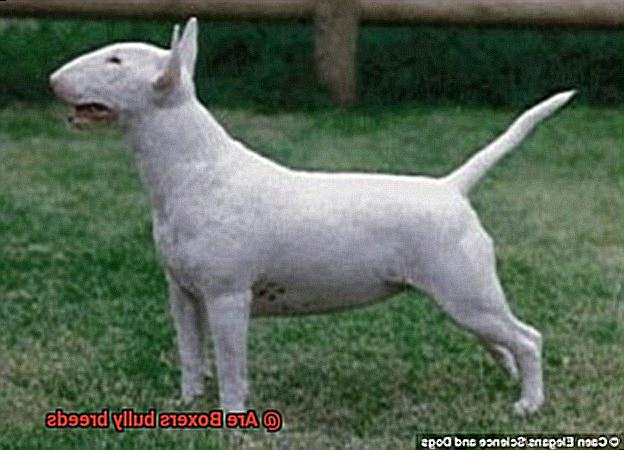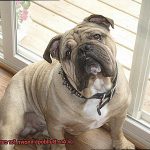Are bulldogs heavy shedders?
You’re thinking about bringing home a bulldog, huh? Well, let’s talk about their shedding situation. Are these adorable wrinkly wonders heavy shedders or is it all just a bunch of fluff? Don’t worry, we’ve got you covered.
Bulldogs are like no other, with their quirky charm and squishy snouts. But what about their fur game? In this blog post, we’re diving deep into the hairy truth about bulldog shedding. We’ll separate fact from fiction and give you the lowdown on what to expect.
Whether you’re considering adopting a bulldog or just curious about our furry friends, this info will help you untangle those hair-raising misconceptions. Get ready to embark on a paw-some journey through the wild world of bulldog shedding.
What is Shedding and Why Do Dogs Shed?
Contents
- 1 What is Shedding and Why Do Dogs Shed?
- 2 Factors that Affect a Bulldog’s Shedding Level
- 3 The Difference Between Bulldogs and Other Breeds
- 4 The Role of Skin Folds in Bulldog Shedding
- 5 Tips for Managing Bulldog Shedding
- 6 The Impact of Health on Bulldog Shedding
- 7 Seasonal Variations in Bulldog Shedding
- 8 Conclusion
In this article, we’ll explore the concept of shedding in dogs, with a specific focus on French bulldogs. So, grab a cup of coffee (or a dog treat) and let’s dive into the world of shedding.
Understanding Shedding:
Shedding is a natural process where dogs lose their old or damaged hair to make way for new growth. It’s an essential part of their hair growth cycle, which consists of three phases: anagen (growth phase), catagen (transition phase), and telogen (resting phase). During the anagen phase, new hair is produced, while the old hair is pushed out during the catagen and telogen phases.
Breed Factors:
Different dog breeds have distinct shedding patterns. Bulldogs, including French bulldogs, are not heavy shedders compared to breeds like German Shepherds or Labrador Retrievers. Bulldogs have a single coat without an undercoat, which means they shed more consistently throughout the year.
Genetics:
Genetics play a role in shedding patterns. If your French bulldog’s parents were heavy shedders, there’s a chance your pup may shed more than average. However, genetics alone don’t determine shedding; other factors come into play.
Hormonal Changes:
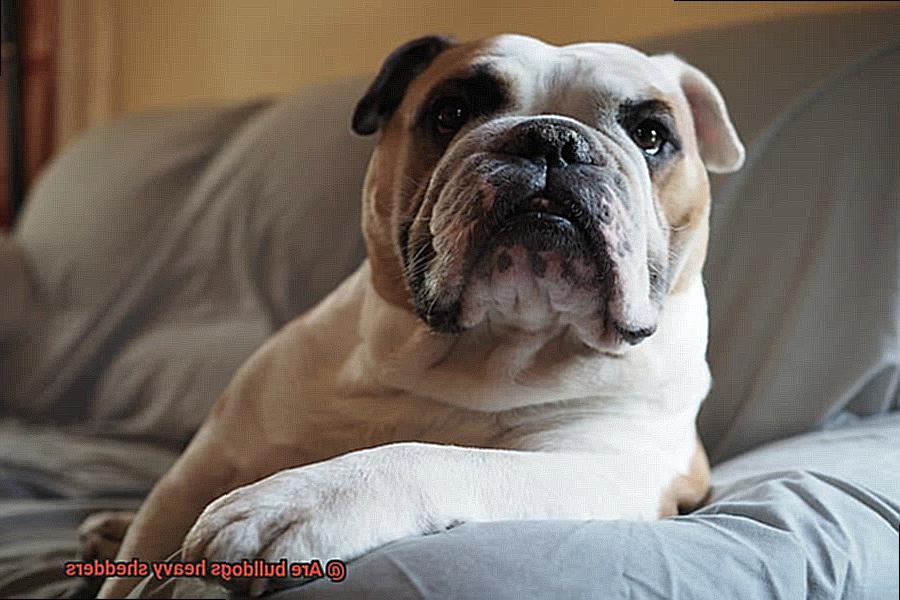
Hormonal changes can trigger shedding in dogs. Female dogs may experience increased shedding during heat cycles or pregnancy. It’s crucial to keep an eye on your female bulldog and provide extra care during these times.
Health Conditions:
Certain health conditions or medications can affect a dog’s coat and lead to excessive shedding. If you notice abnormal shedding patterns in your French bulldog, consult a veterinarian to rule out any underlying health issues.
Environmental Factors:
Seasonal changes can also impact shedding. Dogs often shed more heavily during spring and fall as they prepare for temperature fluctuations. Additionally, indoor temperature and humidity levels can influence shedding. Dry indoor environments may cause more hair loss compared to moist environments.
Managing Shedding in Bulldogs:
While French bulldogs may not shed as heavily as some other breeds, regular grooming practices can help manage shedding and keep their coat healthy:
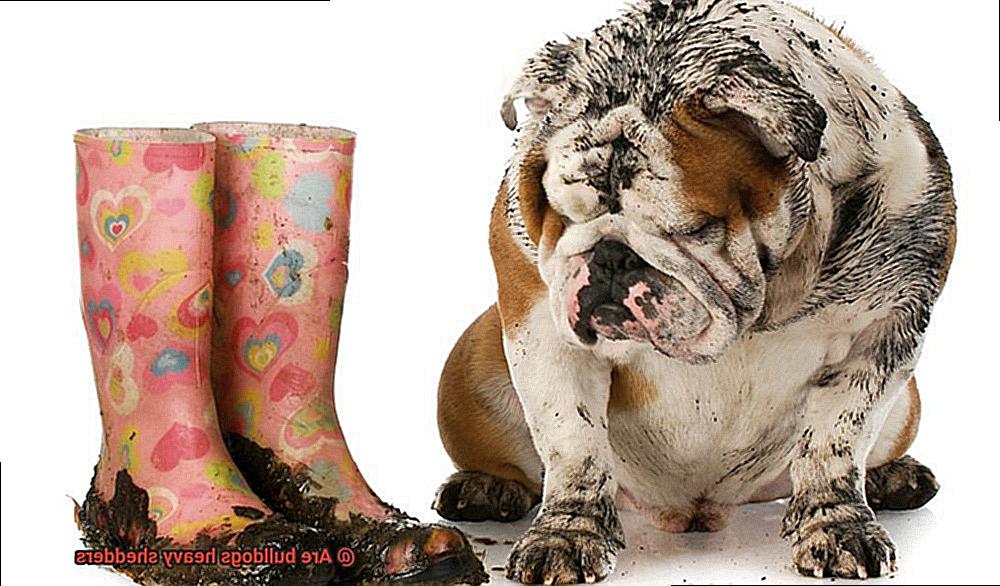
- Brush Regularly: Brush your French bulldog’s coat regularly to remove loose hairs before they end up on your furniture or clothing. Using a soft bristle brush or a grooming glove is effective and gentle on their sensitive skin.
- Clean Skin Folds: Bulldogs have adorable skin folds that can collect dirt, debris, and dead skin cells. Regular cleaning and proper maintenance of these wrinkles are essential to prevent skin problems that can lead to excessive shedding.
Factors that Affect a Bulldog’s Shedding Level
Like any dog, they have their quirks, shedding being one of them. In this article, we’ll dive into the factors that can affect your French bulldog’s shedding level, helping you understand why those little furballs seem to be everywhere.
Genetics:
Just like humans inherit certain traits from their parents, so do our furry friends. Bulldogs, including French bulldogs, have their own unique genetic makeup that can influence their shedding level. Some may be light shedders, while others may leave a trail of fur behind them wherever they go.
Seasonal Changes:
Ah, the joys of spring and fall – the seasons where bulldogs seem to be going through a “coat makeover.” During these times, bulldogs tend to shed more as they prepare for new fur growth. It’s nature’s way of saying, “out with the old, in with the new.”
Hormonal Factors:
Ladies first. Female bulldogs may experience increased shedding during their heat cycles or after giving birth. Hormonal changes can kick those fur follicles into overdrive. Additionally, medical conditions like hypothyroidism or Cushing’s disease can also contribute to excessive shedding in bulldogs.
Diet and Nutrition:
You are what you eat – a saying that holds true for our four-legged companions as well. A balanced and nutritious diet is key to maintaining a healthy coat and reducing shedding. Essential fatty acids found in high-quality dog food can work wonders for your Frenchie’s fur.
Grooming Practices:
Regular grooming is not just a bonding experience; it’s a shedding management technique. Brushing your bulldog’s coat regularly helps remove loose fur before it decides to take up residence on your furniture. Invest in some deshedding tools or grooming gloves, and you’ll witness the magic of reduced shedding.
Environmental Factors:
The environment in which your Frenchie lives can impact their shedding level. Temperature, humidity, and exposure to allergens can affect their skin health and shedding patterns. Keep your home comfortable and allergen-free to keep shedding at bay.
Overall Health:
Just like us, a bulldog’s overall health affects their shedding. Stress, underlying medical conditions, or inadequate care can lead to increased shedding. Regular vet check-ups and a stress-free environment are essential for a healthy coat and reduced shedding.
The Difference Between Bulldogs and Other Breeds
In this article, we’ll dive into the differences between bulldogs and other breeds when it comes to shedding. So, grab a cup of coffee, sit back, and let’s unravel the shedding secrets together.
Shedding Frequency:
Bulldogs are considered moderate shedders compared to other breeds. Their short and dense coats result in less overall shedding, making them a suitable choice for individuals who prefer cleaner homes.
Grooming Needs:
Unlike some breeds that require extensive brushing to combat shedding, bulldogs have relatively low grooming requirements. Regular brushing with a soft bristle brush can help remove loose hair and minimize shedding. Remember, a little extra effort in grooming goes a long way in keeping your Frenchie’s coat healthy.
Seasonal Factors:
Just like humans, dogs experience seasonal changes that can affect their shedding patterns. Bulldogs may shed more during seasonal transitions or warmer months when they shed their winter coat. Be prepared for a temporary increase in shedding during these times.
Skin Health:
Bulldogs are known for their sensitive skin and are prone to allergies and infections, which can lead to excessive shedding. It’s crucial to monitor your Frenchie’s skin health and seek veterinary care if you notice any signs of discomfort or abnormal shedding.
Maintenance and Care:
To minimize shedding and keep your Frenchie’s coat healthy, regular bathing with a gentle shampoo suitable for their sensitive skin is essential. Additionally, routine check-ups with a veterinarian will address any underlying health issues that may contribute to excessive shedding.
Conclusion:
While bulldogs may not be heavy shedders compared to some other breeds, it’s important to understand and manage their grooming needs. With regular brushing, proper care, and attention to skin health, you can help keep your Frenchie’s shedding under control and maintain a healthy and happy coat.
The Role of Skin Folds in Bulldog Shedding
If you’re a proud owner of a French Bulldog, you may have experienced the struggle of dealing with their shedding. Fear not, fellow Frenchie fanatics. We’re here to spill the beans on the role of those cute skin folds in shedding and share some tips on how to reduce it.
Skin Folds: The Good, the Bad, and the Sheddy
Skin folds are one of the defining features of bulldogs, serving as a protective barrier against dirt, dust, and other external irritants. But these folds can also become a haven for dead skin cells, oils, and debris, which can lead to irritation and excessive shedding. To top it off, the warm and moist environment within the folds becomes a breeding ground for pesky bacteria and yeast infections that can worsen shedding problems.
Care Tips for Controlling Shedding
- Clean ‘Em Up: Regular cleaning is essential to keep those skin folds spick and span. Gently wipe the folds with a damp cloth or use specialized wipes recommended by your vet to remove trapped particles and prevent irritation.
- Brush, Baby, Brush: Regular brushing is your secret weapon against shedding. Use a soft-bristle brush or a grooming glove to reach into those crevices and remove excess hair before it gets trapped in the folds.
- Seek Veterinary Assistance: If your bulldog’s skin fold issues are severe or recurring infections are present, consult your vet. They may recommend surgical procedures like a “facelift” or “tail tuck” to reduce excessive skin folds and make cleaning easier.
- Genetics at Play: Keep in mind that genetics play a role in shedding too. Some bulldogs naturally have heavier shedding coats than others, regardless of their skin fold condition. While proper care can manage shedding to some extent, don’t expect it to disappear entirely.
Tips for Managing Bulldog Shedding
French Bulldogs are beloved for their adorable wrinkly faces and friendly personalities. However, they are also known for shedding, which can be a challenge for owners who prefer to keep a clean home or have allergies. But fear not. With a few simple tips and strategies, you can manage your French Bulldog’s shedding and keep their coat under control.
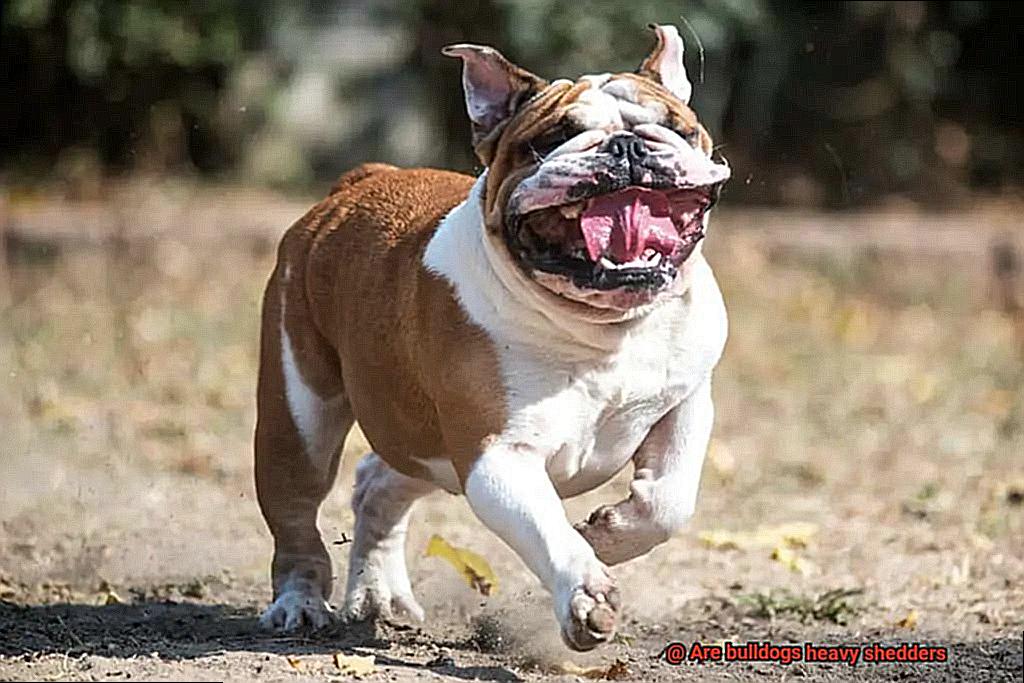
Regular Brushing:
Establishing a regular brushing routine is crucial for managing your French Bulldog’s shedding. Use a soft-bristle brush or a grooming glove and gently brush their coat at least once a week. This helps to remove loose hair and prevent it from ending up all over your furniture and floors. Plus, it promotes healthy skin and stimulates the production of natural oils that keep the coat shiny.
Bathing:
Regular baths are essential for keeping your French Bulldog’s coat clean and minimizing shedding. Use a gentle dog shampoo and thoroughly rinse off any residue to avoid skin irritation. However, be careful not to over-bathe them, as it can strip their skin of natural oils and lead to dryness, which may worsen shedding. Aim for a bath once every 4-6 weeks unless they get particularly dirty.
Healthy Diet:
A well-balanced diet plays a crucial role in managing shedding in French Bulldogs. Ensure that they are getting proper nutrition with high-quality dog food that contains essential vitamins, minerals, and fatty acids. Omega-3 fatty acids, in particular, are beneficial for maintaining healthy skin and coat. Consult with your veterinarian to determine the best diet for your French Bulldog’s specific needs.
Supplements:
In addition to a healthy diet, certain supplements can help reduce shedding in French Bulldogs. Omega-3 fatty acid supplements or fish oil capsules can be added to their food to promote healthy skin and coat condition. However, always consult with your vet before introducing any supplements to their diet to ensure they are safe and appropriate.
Regular Grooming:
Apart from brushing, regular grooming sessions are essential for managing shedding in French Bulldogs. Trim their nails regularly to prevent them from scratching themselves and causing excessive shedding. Clean their ears and check for any signs of infection or irritation. Additionally, consider scheduling professional grooming sessions every few months to keep their coat in top condition and minimize shedding.
The Impact of Health on Bulldog Shedding
We all know that French Bulldogs are absolute bundles of joy, but their shedding can sometimes make us wish we had a magic vacuum cleaner. In this article, we’ll dive into the impact of health on your Bulldog’s shedding and give you some practical tips to keep that shedding manageable. So, let’s get started.
The Importance of Overall Health:
A healthy Bulldog equals a shiny coat with minimal shedding. Just like us humans, a healthy coat requires proper nutrition and regular grooming. So, let’s take a closer look at how different health factors can affect your furry friend’s shedding.
Allergies: The Shedding Culprit:
Allergies, both food and environmental, can cause your Bulldog’s skin to become inflamed, leading to increased shedding. Identifying and addressing the underlying allergens can help reduce shedding. Keep an eye out for common allergens like certain foods, pollen, dust mites, or even grooming products.
Hormonal Imbalances: The Silent Shedder:
Hormonal imbalances, such as an underactive thyroid or adrenal issues, can wreak havoc on your Bulldog’s coat quality and lead to excessive shedding. These conditions can be managed with medication and proper veterinary care.
Skin Infections: Hair Loss and Shedding Trouble:
Bulldogs are prone to skin infections that can cause hair loss and shedding. Regular check-ups with a veterinarian and maintaining good hygiene practices can help prevent and treat these infections.
Diet Matters:
Don’t overlook the impact of your Bulldog’s diet on shedding. A balanced diet with essential nutrients promotes healthy skin and coat, reducing shedding. Consider high-quality dog food specifically formulated for the nutritional needs of Bulldogs.
Grooming: A Shedding Solution:
Regular grooming is crucial for managing Bulldog shedding. Brushing their coat regularly helps remove loose hairs and prevents them from ending up all over your house. Additionally, regular bathing with appropriate shampoos can keep the skin healthy and reduce shedding.
Genetics: The Natural Shedders:
It’s important to remember that genetics also play a role in Bulldog shedding. Some Bulldogs may naturally shed more than others due to their specific breed characteristics. Embrace your Bulldog’s unique shedding tendencies and focus on managing it effectively.
Seasonal Variations in Bulldog Shedding
French Bulldogs are beloved companions known for their adorable looks and affectionate nature. However, their shedding can pose a challenge for owners, especially during certain seasons. In this article, we will dive into the seasonal variations in Bulldog shedding and provide expert tips on how to properly care for your furry friend during these times.
Understanding Seasonal Shedding:
Bulldogs, including French Bulldogs, experience seasonal shedding, which is more noticeable during spring and fall. This shedding phase, commonly known as “blowing coat,” involves shedding old fur to make way for new growth. It is important to note that not all Bulldogs shed equally during these seasons.
Regular Grooming:
To manage the amount of loose fur in your home, regular grooming is essential. Daily brushing with a grooming brush or deshedding tool designed specifically for Bulldogs can effectively remove loose hairs before they have a chance to fall out on their own. This practice also promotes bonding between you and your pooch.
Proper Nutrition:
A balanced and nutritious diet plays a crucial role in maintaining a healthy coat and reducing shedding. Ensure that your Bulldog’s diet includes essential fatty acids, which contribute to healthy skin and coat growth. Consult your veterinarian to determine the best diet for your furry friend.
Seek Veterinary Advice:
Excessive shedding could be a sign of an underlying health issue. If you notice abnormal or excessive shedding, it is important to consult with a veterinarian for further evaluation. They can rule out any potential health concerns and provide appropriate treatment if necessary.
Keep Your Home Clean:
During shedding seasons, it’s important to keep your home clean and fur-free. Regularly vacuuming carpets, using lint rollers on furniture, and washing pet bedding can help minimize the presence of loose fur around your living space.
Consider Professional Grooming:
If you find it challenging to manage your Bulldog’s shedding on your own, consider seeking the help of a professional groomer. They have the expertise and tools to handle shedding effectively while keeping your pup comfortable and happy.
gSx-Q7W4UoI” >
Conclusion
In conclusion, bulldogs are not known for being heavy shedders when compared to other breeds. Shedding in bulldogs can be influenced by a variety of factors, including genetics, hormones, health conditions, environment, and grooming practices. Unlike some breeds with double coats, bulldogs have a single coat without an undercoat, which means they consistently shed throughout the year.
To manage shedding in bulldogs effectively, regular grooming is essential. This includes brushing their coat frequently and cleaning their adorable skin folds. Additionally, providing a well-balanced and nutritious diet is crucial for maintaining a healthy coat and reducing shedding. Environmental factors such as changes in seasons and indoor temperature and humidity levels can also impact shedding in bulldogs.
Although bulldogs may not shed as much as other breeds, it’s important to understand and meet their grooming needs to keep their coat healthy and minimize shedding. Regular visits to the vet are vital for addressing any underlying health issues that could contribute to excessive shedding.
With proper care, attention to grooming, and a healthy lifestyle, you can effectively manage shedding in your bulldog while ensuring they have a happy and healthy coat.
